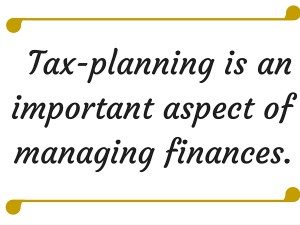RRIF rule change presents a tax planning option
November 19, 2015
 Individuals currently withdrawing funds from their Registered Retirement Income Fund (RRIF) have some year-end tax planning ahead.
Individuals currently withdrawing funds from their Registered Retirement Income Fund (RRIF) have some year-end tax planning ahead.
The tax planning idea in this column is oversimplified.
The goal is to make you aware of changes to your RIFF withdrawal rate so you can plan accordingly.
Our recommendation is to seek professional tax advice.
The foundation of tax planning in Canada is based on our income tax structure. As your income increases so does the marginal tax rate.
For example, if you earned $30,000, the next one dollar of income is subject to a combined federal and Ontario tax rate of just over 20 per cent.
If your income is $50,000, the next one dollar of income is taxed at just over 31 per cent.
As your income increases or decreases your marginal tax rate can change. 
The tax planning tip comes from a change introduced this year on how RRIF withdrawal amounts are calculated. The amount of withdrawal that you are required to make has decreased by approximately 25 per cent.
If the value of your RRIF was $100,000 on December 31, 2014, the old minimum withdrawal amount was $7,380.
Under the new rules, that withdrawal amount can be reduced by $2,100.
You have two options.
You can do nothing or you can elect to reduce your RRIF withdrawal amount by $2,100.
This is done by making a $2,100 contribution to your RRIF to top it up by the extra that was taken out.
The fundamental question is whether it is beneficial to have a lower taxable income. There are many factors that should be considered.
You will pay less tax because of a lower RIFF payment. There might be some additional advantages of reducing your income because of the Old Age Security clawback.
There are many other issues to consider and that is why we recommended getting professional tax advice.
There is a second reason to be aware that RRIF payments have decreased. Lower RRIF payments will mean you have lower cash flow next year.
Assume you currently receive $1,000 per month from your RRIF. Next year the reduction in RRIF payments will mean you will receive approximately $750.
Better to realize this now and plan accordingly versus wait until next year and wonder why there are not enough funds coming into your bank account to make ends meet.
The deadline for making a contribution to your RRIF is February 29, the same as making a contribution to a Registered Retirement Savings Plan (RRSP).
Most investors think that RRIF decisions are all based on the established rules. That is incorrect.
There are many sound tax strategies that can be used for those owning a RRIF or those who decide to convert all or part of their RRSP to a RRIF before the age deadline of 71.
Tax planning is an important aspect of managing your financial affairs.
We recommend understanding what is best for you and to seek professional advice.
If you would like to see Danielle Lavigne’s presentation: Tax Tips for Boomers and Beyond which includes RRIF 2015 information, click here.
RELATED ARTICLES
